May 30, 2018 | Economics, Food & Water, Sustainable Development, Systems Analysis
By Alan Nicol, Strategic Program Leader at the International Water Management Institute (IWMI)
I was at the local corner store in Uganda last week and noticed the profusion of rice being sold, the origin of which was from either India or Pakistan. It is highly likely that this rice being consumed in Eastern Africa, was produced in the Indus Basin, using Indus waters, and was then processed and shipped to Africa. That is not exceptional in its own right and is, arguably, a sign of a healthy global trading system.
Nevertheless, the rice in question is likely from a system under increasing stress, one that is often simply viewed as a hydrological (i.e., basin) unit. What my trip to the corner store shows is that perhaps more than ever before a system such as the Indus is no longer confined–it extends well beyond its physical (hydrological) borders.
Not only does this rice represent embedded ‘virtual’ water (the water used to grow and refine the produce), but it also represents policy decisions, embedded labor value, and the gamut of economic agreements between distribution companies and import entities, as well as the political relationship between East Africa and South Asia. On top of that are the global prices for commodities and international market forces.
In that sense, the Indus River Basin is the epitome of a complex system in which simple, linear causality may not be a useful way for decision makers to determine what to do and how to invest in managing the system into the future. Integral to this biophysical system, are social, economic, and political systems in which elements of climate, population growth and movement, and political uncertainty make decisions hard to get right.
Like other systems, it is constantly changing and endlessly complex, representing a great deal of interconnectivity. This poses questions about stability, sustainability, and hard choices and trade-offs that need to be made, not least in terms of the social and economic cost-benefit of huge rice production and export.
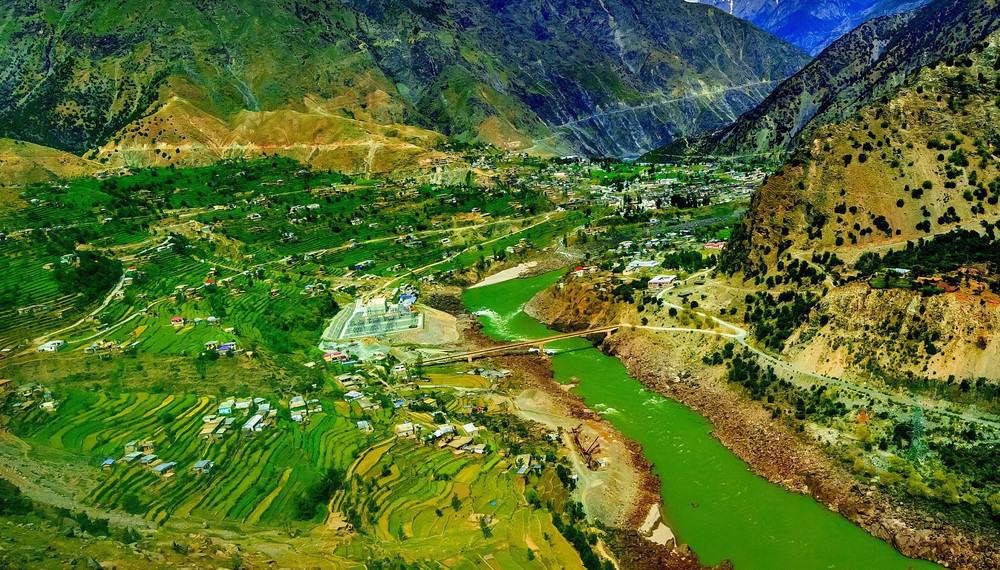
An aerial view of the Indus River valley in the Karakorum mountain range of the Basin. © khlongwangchao | Shutterstock
So how do we go about planning in a system that is in such constant flux?
Coping with system complexity in the Indus is the overarching theme of the third Indus Basin Knowledge Forum (IBKF) being co-hosted this week by the International Centre for Integrated Mountain Development (ICIMOD), the International Institute for Applied Systems Analysis (IIASA), the International Water Management Institute (IWMI), and the World Bank. Titled Managing Systems Under Stress: Science for Solutions in the Indus Basin, the Forum brings together researchers and other knowledge producers to interface with knowledge users like policymakers to work together to develop the future direction for the basin, while improving the science-decision-making relationship. Participants from four riparian countries–Afghanistan, China, India, and Pakistan–as well as from international organizations that conduct interdisciplinary research on factors that impact the basin, will work through a ‘marketplace’ for ideas, funding sources, and potential applications. The aim is to narrow down a set of practical and useful activities with defined outcomes that can be tracked and traced in coming years under the auspices of future fora.
The meeting builds on the work already done and, crucially, on relations already established in this complex geopolitical space, including under the Indus Forum and the Upper Indus Basin Network. By sharing knowledge, asking tough questions, and identifying opportunities for working together, the IBKF hopes to pin down concrete commitments from both funders and policymakers, but also from researchers, to ensure high quality outputs that are of real, practical relevance to this system under stress–from within and externally.
Scenario planning
Feeding into the IBKF3, and directly preceding the forum, the Integrated Solutions for Water, Energy, and Land Project (ISWEL) will bring together policymakers and other stakeholders from the basin to explore a policy tool that looks at how best to model basin futures. This approach will help the group conceive possible futures and model the pathways leading to the best possible outcomes for the most people. This ‘policy exercise approach’ will involve six steps to identify and evaluate possible future pathways:
- Specifying a ‘business as usual’ pathway
- Setting desirable goals (for sustainability pathways)
- Identifying challenges and trade-offs
- Understanding power relations, underlying interests, and their role in nexus policy development
- Developing and selecting nexus solutions
- Identifying synergies, and
- Building pathways with key milestones for future investments and implementation of solutions.
The summary of this scenario development workshop and a vision for the Indus Basin will be shared as part of the IBKF3 at the end of the event, and will help the participants collectively consider what actions can be taken to ensure a prosperous, sustainable, and equitable future for those living in the basin.
The rice that helps feed parts of East Africa plays a key global role–the challenge will be ensuring that this important trading relationship is not jeopardized by a system that moves from pressure points to eventual collapse. Open science-policy and decision-making collaboration are key to making sure that this does not happen.
This blog was originally published on https://wle.cgiar.org/thrive/2018/05/29/rice-and-reason-planning-system-complexity-indus-basin.
Note: This article gives the views of the author, and not the position of the Nexus blog, nor of the International Institute for Applied Systems Analysis.
Nov 7, 2017 | Data and Methods, Food, Postdoc, Water
By Valeria Javalera Rincón, IIASA CONACYT Postdoctoral Fellow in the Ecosystems Services and Management and Advanced Systems Analysis programs.
What is more important: water, energy, or food?
If you work in the water, energy or agriculture sector we can guess what your answer might be! But if you are a policy or decision maker trying to balance all three, then you know that it is getting more and more difficult to meet the growing demand for water, energy, and food with the natural resources available. The need for this balance was confirmed by the 17 Sustainable Development Goals, agreed by 193 countries, and the Paris climate agreement. But how to achieve it? Intelligent cooperation is the key.
The thing is that water, energy, and food are all related in such a way that are reliant on each other for production or distribution. This is the so-called Water-Energy-Food nexus. In many cases, you need water to produce energy, you need energy to pump water, and you need water and energy to produce, distribute, and conserve food.
Many scientists have tried to relate or to link models for water, agriculture, land, and energy to study these synergic relationships. In general, so far, there are two ways that this has been solved: One is integrating models with “hard linkages” like this:
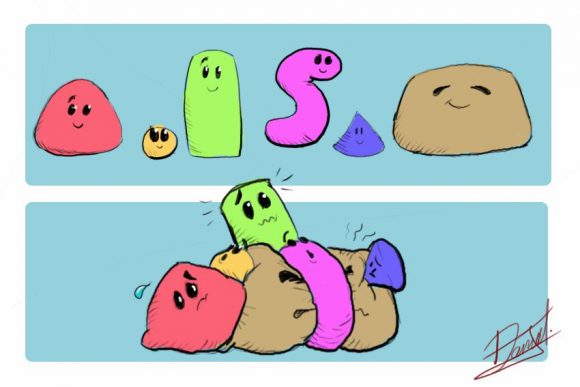
© Daniel Javalera
In the picture there are six models (let’s say water, land use, hydro energy, gas, coal, food production models) that are then integrated into just one. The resulting integrated model then preserves the relationships but is complex, and in order to make it work with our current computer power you often have to sacrifice details.
Another way is to link them is using so-called “soft linkages” where the output of one model is the input of the next one, like this:
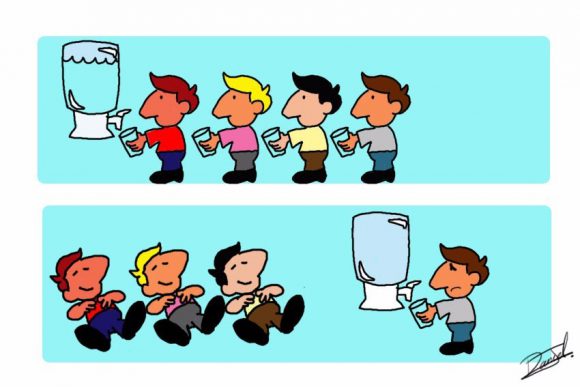
© Daniel Javalera
In the picture, each person is a model and the input is the amount of water left. These models all refer to a common resource (the water) and are connected using “soft linkages.” These linkages are based on sequential interaction, so there is no feedback, and no real synergy.
The intelligent linker agent
But what if we could have the relations and synergies between the models? It would mean much more accurate findings and helpful policy advice. Well, now we can. The secret is to link through an intelligent linker agent.
I developed a methodology in which an intelligent linker agent is used as a “negotiator” between models that can communicate with each other. This negotiator applies a machine-learning algorithm that gives it the capability to learn from the interactions with the models. Through these interactions, the intelligent linker can advise on globally optimal actions.
The knowledge of the intelligent linker is based on past experience and also on hypothetical future actions that are evaluated in a training process. This methodology has been used to link drinking water networks, such as Barcelona’s drinking water network.
When I came to IIASA, I was asked to apply this approach to optimize trading between cities in the Shanxi region of China. I used a set of previously development models which aimed to distribute water and land available for each city in order to produce food (eight types of crops) and coal for energy. The intelligent linker agent optimizes trading between cities in order to satisfy demand at the lowest cost for each city.
The purpose of this exercise was to compare the solutions with those from “hard linkages” – like those in the first picture. We found that the intelligent linker is flexible enough to find the optimal solution to questions such as: How much of each of these products should each city export/import to satisfy global demand at a global lower economic and ecological cost? What actions are optimal when the total production is insufficient to meet the total demand? Under what conditions is it preferable to stop imports/exports when production is insufficient to supply the demand of each city?
The answers to these questions can be calculated by the interaction with the models of each city just by the interfacing with the intelligent linker agent, this means that no major changes in the models of each city were needed. We also found that, under the same conditions, the solutions using the intelligent linker agent were in agreement with those found when hard linking was used.
My next challenge is to build a prototype of a “distributed computer platform,” which will allow us to link models on different computers in different parts of the world—so that we in Austria could link to a model built by colleagues in Brazil, for example. I also want to link models of different sectors and regions of the globe, in order to prove that intelligent cooperation is the key to improving global welfare.
References
Xu X, Gao J, Cao G-Y, Ermoliev Y, Ermolieva T, Kryazhimskiy AV, & Rovenskaya E (2015). Modeling water-energy-food nexus for planning energy and agriculture developments: case study of coal mining industry in Shanxi province, China. IIASA Interim Report. IIASA, Laxenburg, Austria: IR-15-020
Javalera V, Morcego B, & Puig V, Negotiation and Learning in distributed MPC of Large Scale Systems, Proceedings of the 2010 American Control Conference, Baltimore, MD, 2010, pp. 3168-3173. doi: 10.1109/ACC.2010.5530986
Valeria J, Morcego B, & Puig V, Distributed MPC for Large Scale Systems using Agent-based Reinforcement Learning, In IFAC Proceedings Volumes, Volume 43, Issue 8, 2010, Pages 597-602, ISSN 1474-6670, ISBN 9783902661913, https://doi.org/10.3182/20100712-3-FR-2020.00097.
Morcego B, Javalera V, Puig V, & Vito R (2014). Distributed MPC Using Reinforcement Learning Based Negotiation: Application to Large Scale Systems. In: Maestre J., Negenborn R. (eds) Distributed Model Predictive Control Made Easy. Intelligent Systems, Control and automation: Science and Engineering, vol 69. Springer, Dordrecht
Javalera Rincón V, Distributed large scale systems: a multi-agent RL-MPC architecture, Universitat Politècnica de Catalunya. Institut d’Organització i Control de Sistemes Industrials,Doctoral thesis. 2016. http://upcommons.upc.edu/handle/2117/96332
Note: This article gives the views of the author and not the position of the Nexus blog, nor of the International Institute for Applied Systems Analysis.
Aug 30, 2017 | Environment, Food & Water, Young Scientists
By Parul Tewari, IIASA Science Communication Fellow 2017
Two things are distinctly noticeable when you meet Cornelius Hirsch—a cheerful smile that rarely leaves his face and the spark in his eyes as he talks about issues close to his heart. The range is quite broad though—from politics and economics to electronic music.

Cornelius Hirsch
After finishing high school, Hirsch decided to travel and explore the world. This paid off quite well. It was during his travels, encompassing Hong Kong, New Zealand, and California, that Hirsch started taking a keen interest in economic and political systems. This sparked his curiosity and helped him decide that he wanted to take up economics for higher studies. Therefore, after completing his masters in agricultural economics, Hirsch applied for a position as a research associate at the Austrian Institute of Economic Research and enrolled in the PhD-program of the Vienna University of Economics and Business to study trade, globalization, and its impact on rural areas. Currently, he is looking at subsidies and tariffs for farmers and the agricultural sector at a global scale.
As part of the 2017 Young Scientists Summer Program at IIASA, Hirsch is digging a little deeper to analyze how foreign direct investments (FDI) in agricultural land operate. “Since 2000, the number of foreign land acquisitions have been growing—governmental or private players buy a lot of land in different countries to produce crops. I was interested in knowing why there are so many of these hotspots in the world— sub-Saharan Africa, Papua New Guinea, Indonesia—why are people investing in these areas?,” says Hirsch.
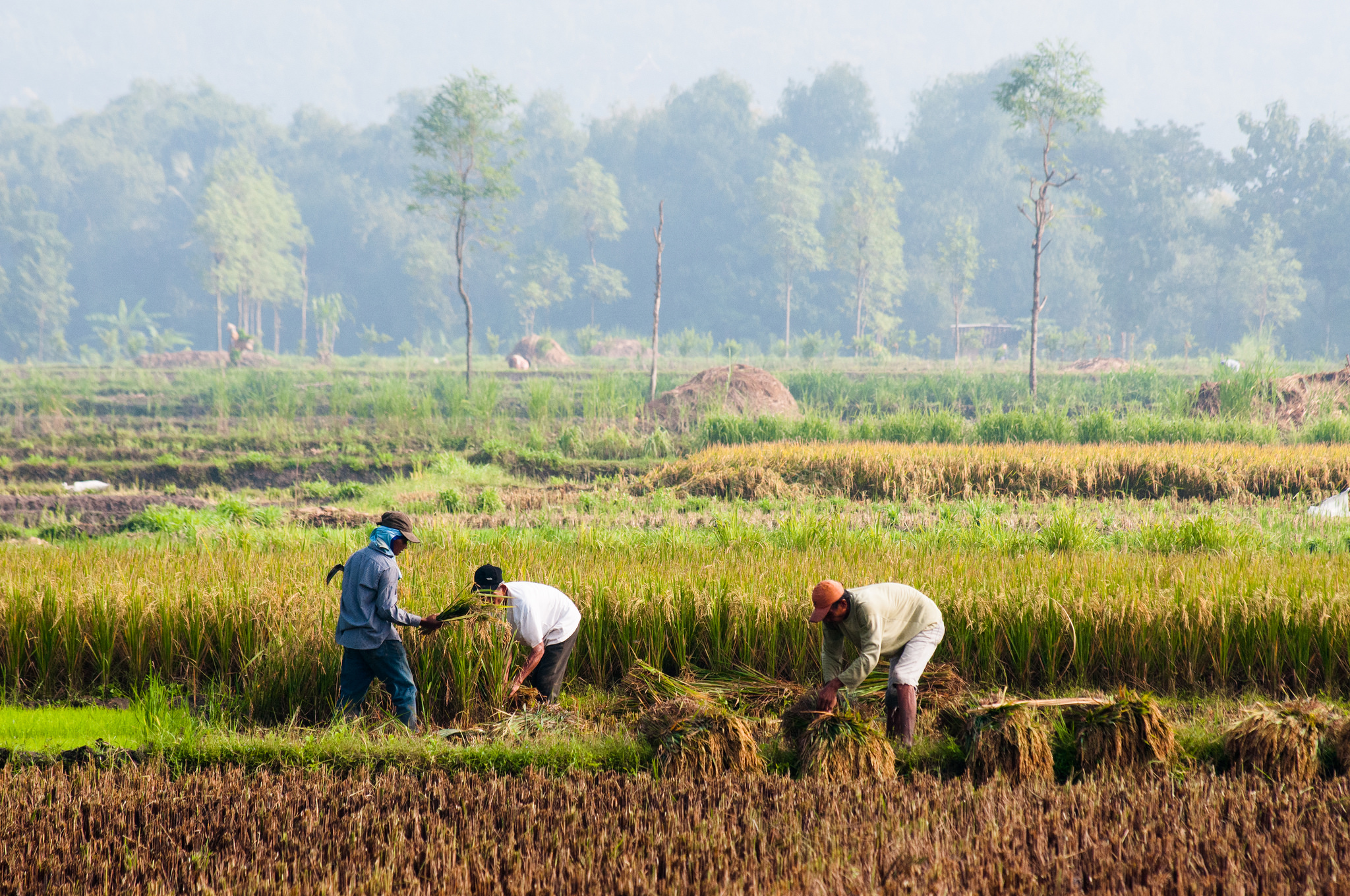
Farming in one of the large agricultural areas in Indonesia ©CIFOR I Flickr
Increased food demand from a growing world population is leading to an increased rate of investment in agriculture in regions with large stretches of fertile land. That these regions are largely rain-fed make them even more attractive for investors as they save the cost of expensive irrigation services. In fact, Hirsch argues that “the term land-grabbing is misleading. It should actually be water-grabbing as water is the foremost deciding factor—even more important than simply land abundance.”
Some researchers have found an interesting contrast between FDI in traditional sectors, such as manufacturing, and the ones in agricultural land. While investors in the former look for stable institutions and good governmental efficiency, FDI in land deals seems to target regions with less stable institutions. This positive relationship between corruption and FDI is completely counterintuitive. Hirsch says that one reason could be that “sometimes weaker institutions are easier to get through when it comes to such vast amount of lands. A lot of times these deals and contracts are oral and have no written proof—the contracts are not transparent anyway.”
For example in South Sudan, the land and soil conditions seem to be so good that investors aren’t deterred despite conflicts due to corrupt practices or inefficient government agencies.

One of the indigenous communities in Madagascar, a place which is vulnerable to land acquisitions © IamNotUnique I Flickr
One area that often goes unnoticed is the violation of land rights of indigenous communities. If a government body decides to sell land or give out production licenses to investors for leasing the land without consulting the actual community, it is only much later that the affected community finds out that their land has been given away. Left with no land and hence no source of livelihood, these communities are forced to migrate to urban areas.
A strain of concern enters his voice as Hirsch talks about the impact. “Land as big as two times the area of Ecuador has been sold off in the past—but it accounts for a tiny percentage of the global production area.” With rising incomes and greater consumption of meat, a lot of land is used to produce animal feed crops. “This is a very inefficient way of using land,” he says.
During the summer program at IIASA, Hirsch is generating data that will help him look at these deals in detail and analyze the main factors that are taken into consideration before finalizing a land deal. At the moment he is only able to give an overview of land-grabbing at the global level. With more data on the location of the deals he can look at the factors that influence these decisions in the first place such as the proximity between the two countries involved in agricultural investments and the size of their economies.
While there is always huge media coverage when a scandal about these land acquisitions comes out in the open, Hirsch seems determined to dig deeper and uncover the dynamics involved.
About the researcher
Cornelius Hirsch is a research associate at the Austrian Institute of Economics and Research (WIFO). At IIASA he is working under the supervision of Tamas Krisztin and Linda See in the Ecosystems Services and Management Program (ESM).
This article gives the views of the author, and not the position of the Nexus blog, nor of the International Institute for Applied Systems Analysis.
Oct 4, 2016 | Climate Change, Food
By David Leclère, IIASA Ecosystems Services and Management Program
August was the warmest ever recorded globally, as was every single month since October 2015. It will not take long for these records to become the norm, and this will tremendously challenge food provision for everyone on the planet. Each additional Celsius degree in global mean temperature will reduce wheat yield by about 5%. While we struggle to take action for limiting global warming by the end of the century to 2°C above preindustrial levels, business as usual scenarios come closer to +5 °C.
However, we lack good and actionable knowledge on this perfect storm in the making. Despite the heat, world wheat production should hit a new record high in 2016, but EU production is expected to be 10% lower than last year. In France, this drop should be around 25-30% and one has to go back to 1983 to find yields equally low. Explanations indeed now point to weather as a large contributor. But underlying mechanisms were poorly anticipated by forecasts and are poorly addressed in climate change impacts research.
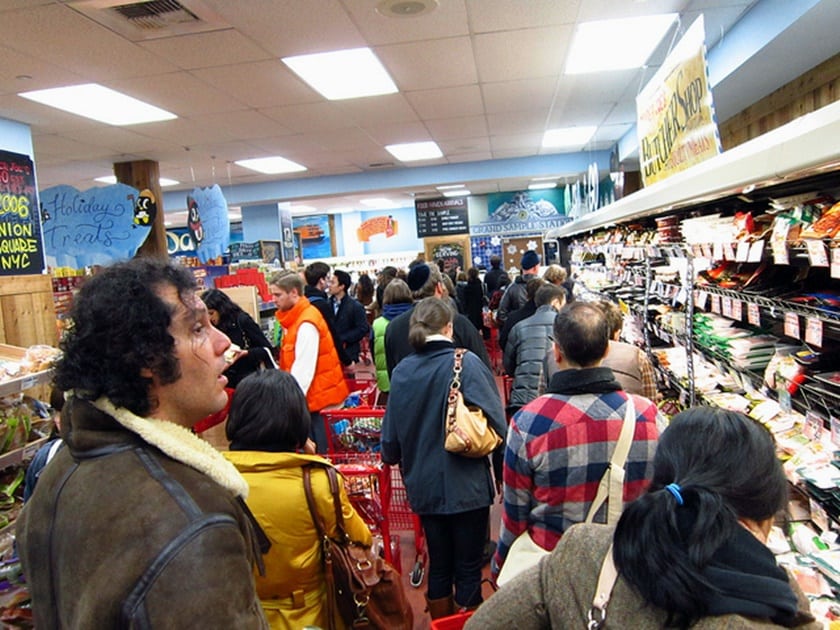
©Paul Townsend via Flickr
Second, many blind spots remain. For example, livestock has a tremendous share in the carbon footprint of agriculture, but also a high nutritional and cultural value. Yet, livestock were not even mentioned once in the summary for policymakers of the last IPCC report dedicated to impacts and adaptation. Heat stress reduces animal production, and increases greenhouse gas emissions per unit of product. In addition, a lower share of animal products in our diet could dramatically reduce pollution and food insecurity. However, we don’t understand well consumers’ preferences in that respect, and how they can be translated in actionable policies.
How can we generate adequate knowledge in time while climate is changing? To be able to forecast yields and prevent dramatic price swings like the 2008 food crisis? To avoid bad surprises due to large missing knowledge, like the livestock question?
In short: it will take far more research to answer these questions—and that means a major increase in funding.
I recently presented two studies by our team at a scientific conference in Germany, which was organized by a European network of agricultural research scientists (MACSUR). One was a literature review on how to estimate the consequences of heat stress on livestock at a global scale. The other one presented scenarios on future food security in Europe, generated in a way that delivers useful knowledge for stakeholders. The MACSUR network was funded as a knowledge hub to foster interactions between research institutes of European countries. In many countries, the funding covered travels and workshops, not new research. Of course, nowadays researchers have to compete for funding to do actual research.
So let’s play the game. The MACSUR network is now aiming at a ‘Future and Emerging Technologies Flagship’, the biggest type of EU funding: 1 billion Euros over 10 years for hundreds of researchers. Recent examples include the Human Brain Project, the Graphene Flagship, and the Quantum Technology Flagship. We are trying to get one on modeling food security under climate change.
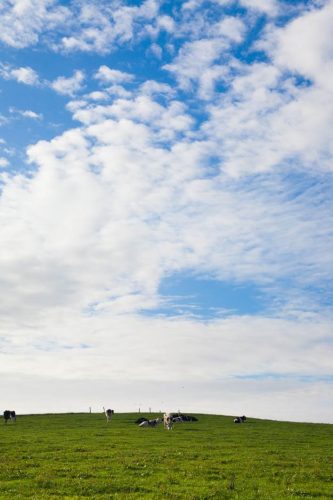
© Sacha Drouart
Such a project could leapfrog our ability to deal with climate change, a major societal challenge Europe is confronted with (one of the two requirements for FET Flagship funding). The other requirement gave us a hard time at first sight: generating technological innovation, growth and jobs in Europe -but one just needs the right lens. First, agriculture already sustains about 44 million jobs in the EU and this will increase if we are serious about reducing the carbon content of our economy. Second, data now flows at an unprecedented speed (aka, big data). Think about the amount of data acquired with Pokemon Go, and imagine we would harness such concept for science through crowdsourcing and citizen-based science. With such data, agricultural forecasts would perform much better. Similarly, light drones and connected devices will likely open a new era for farm management. Third, we need models that translate big data into knowledge, and not only for the agricultural sector. Similarly, models can also be powerful tools to confront views and could trigger large social innovation.
To get this funding, we need support from a lot of people. The Graphene project claimed support from than 3500 actors, from citizens to industrial players in Europe. We have until end of November to reach 3500 votes, at least. If you think EU should give food security under climate change the same importance as improving the understanding of the human brain, or developing quantum computers, we need you. This will simply never happen without you! Please help us out with two simple actions:
- Go the proposal, and vote for/comment it (see instructions, please highlight the potential for concrete innovations)!
- Spread the word – share this post with your friends, your family, and your colleagues!
Note: This article gives the views of the author, and not the position of the Nexus blog, nor of the International Institute for Applied Systems Analysis.
Sep 13, 2016 | Sustainable Development
By IIASA Deputy Director General Nebojsa Nakicenovic and Caroline Zimm, IIASA Transitions to New Technologies Program and The World in 2050 (TWI2050) initiative. (Originally published on The Guardian)
2015 marked a historic turning point. The sustainable development goals (SDGs) unanimously adopted by the United Nations last September provide an aspirational narrative and specific targets for human development: a world free from hunger, injustice and absolute poverty; a world with universal education, health and employment; a world with inclusive economic growth, based on transparency, dignity and equity.
The 17 SDGs’ call for “global citizenship and shared responsibility” and provide legitimacy for a new global social contract for a grand transformation toward a sustainable future. They fully acknowledge the scientific advances achieved during the last three decades that have established compelling evidence that otherwise, as the UN general assembly warned, “the survival of many societies, and of the biological support systems of the planet, is at risk.” Humanity has pushed the Earth system and its global commons to their limits and the SDGs provide us with the long-needed paradigm shift towards realizing the opportunity of a sustainable future for all.
The climate agreement adopted in Paris last December has further strengthened understanding that our society depends on sustainable stewardship of the global commons, shared by us all – and particularly on the stability of the climate system. The Earth system can no longer be viewed as an economic or social externality. Last year we moved beyond the traditional view of global commons as merely the common heritage of humankind outside national jurisdiction. Now we must move beyond national sovereignty to deal with the Earth system and human systems holistically, as the SDGs require. The Paris agreement is a huge step in the right direction.
Time is running out, so we must take urgent action to implement the UN 2030 agenda. Just 14 years are left – less than the wink of an eye in the history of human development, or of the Holocene’s stable Earth systems. But where to start? Which of the 17 goals, which of the 169 targets should be tackled first? Policy makers, the media, civil society and scientists all ask these questions.
However, the 2030 agenda stresses that the SDGs are indivisible and integrated – and cumulative, since efforts to achieve them must be sustained well into the second half of the century, especially in preserving the regulating function of the global commons, Some of the goals, such as SDG13 on climate, must operate on a time scale longer than century.

Sustainable Development Goal 6: Clean water and sanitation.
Photo by Albert Gonzalez Farran, UNAMID
Moreover, there are interactions between and among the SDGs. For example, achieving SDG7, the energy goal, could jeopardize SDGs related to water, health and climate. Tackled in harmony, however, these goals can support one another: there would, for example, be clear health benefits from reducing indoor and outdoor air pollution through global decarbonization. Jointly implementing all the SDGs would contribute both to further human development and to safeguarding the commons and the stability of the Earth systems. Importantly, joint implementation that avoids silo-type thinking would be cheaper and faster than tackling them separately.
All these goals should be achieved in such a way as to maximize synergies and minimize investment costs and trade-offs. The SDG credo “leave no one behind” also applies to the SDGs themselves. They are indivisible. We have to deliver on all of them if we want to succeed.
The SDGs are very ambitious but it appears that tackling them together will help humanity make rapid progress and enter a new era for human societies and the Earth system. Yet, many interactions – and their scope – are unknown, and this hampers holistic policy making. We lack clear understanding of the benefits of achieving SDGs and of costs of inaction, especially when it comes to regional and national differences. We urgently need this fact-based information.
We have a plethora of knowledge, but need new ways to synthesize, integrate and share it so as to use its full potential in support of the SDGs and the global commons. Science – one of the strongest voices of the environment in governance – must become more active and leave its ivory tower to engage more intensely with other stakeholders.
This is why we at IIASA, together with the Stockholm Resilience Center, and the Sustainable Development Solutions Network have launched the scientific initiative The World in 2050 (TWI2050), designed to provide the scientific knowledge to support the policy process and implementation of the 2030 agenda.
TWI2050 aims to address the full spectrum of transformational challenges in fulfilling the SDGs in an integrated way so as to avoid potential conflicts among them and reap the benefits of potential synergies through achieving them in unison. This requires a systemic approach.
The time for “climate-only” or “economic development-only” approaches is over. We urgently need an integrated understanding of the processes that account for the inter-linkages between the economy, demography, technology, environment, climate, human development, all global commons and planetary boundaries. TWI2050 brings together leading policymakers, analysts, and modelling and analytical teams to collaborate in developing pathways towards the sustainable futures and policy frameworks necessary for achieving the needed transformational change.
Such a grand transformation goes beyond a purely technology-centered view of the world or the substitution of one technology by another. It encompasses social and behavioral changes at all levels, as well as technological ones. Incremental changes, now being experienced in some areas, are useful but will not suffice: we have waited too long and the window for action is closing rapidly in some domains including such global commons as climate. We will need radical changes in human behavior and technological paradigms. TWI2050 will look beyond 2030 to 2050 – and, in some cases, even to 2100 – to draw a vision of the world where the SDGs are eventually fulfilled.
The SDGs and the Paris agreement show what institutional international governance can achieve with joined forces. We have entered a new era of global governance, acknowledging the complexity and the connectivity of human development with the global commons and the Earth system. TWI2050 hopes to serve the global community with the best science available in tackling these key global challenges for humankind.
This article originally appeared on The Guardian.
Note: This article gives the views of the authors, and not the position of the Nexus blog, nor of the International Institute for Applied Systems Analysis.










You must be logged in to post a comment.